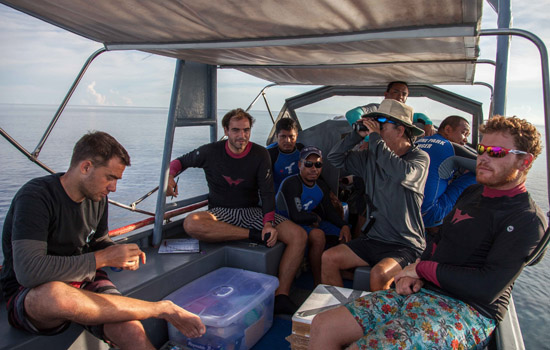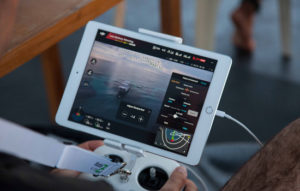
29 Jul FIRST-EVER TRACKING OF TIGER SHARKS IN TUBBATAHA REEF
Article originally published July 14, 2016, University of Victoria

The research group uses drones to locate bait balls (a natural occurrence of “bait fish” that attract sharks) with this monitor. Credit: Sally Snow, LAMAVE.
An international research team, which is led by the Tubbataha Management Office (TMO) and the marine conservation group Large Marine Vertebrates Research Institute Philippines (LAMAVE), recently placed the first ever satellite tracking tag on a tiger shark in one of the world’s most pristine reefs—the UNESCO world heritage site, Tubbataha Reefs Natural Park. University of Victoria Geographer and CCRN researcher Phil Dearden, who is an expert on marine conservation, marine protected areas, whale sharks and whale shark tourism, is providing his expertise and assistance to a team that is now able to track the tiger shark’s movements in real time. Dearden is part of a continuing collaboration that includes scientists from South America, Europe and North America to improve understanding and management of this reef.
Sharks play a crucial role in marine biodiversity and the new research will have significant impact on shark conservation in Southeast Asia and the Philippines by tracking the movements of this 3.36-metre female tiger shark by satellite. In addition to the satellite tag, the researchers also attached acoustic tags to a number of sharks and placed acoustic receivers on the ocean floor surrounding the reef. The receivers create a record whenever a shark comes in range and provide a finer-scale analysis of shark movements.
The information contained in this post was adapted from the article, “UVIC RESEARCHER ASSISTS IN FIRST-EVER TRACKING OF TIGER SHARK IN TUBBATAHA REEF,” posted by the University of Victoria. Featured image credit: Sally Snow, LAMAVE.


